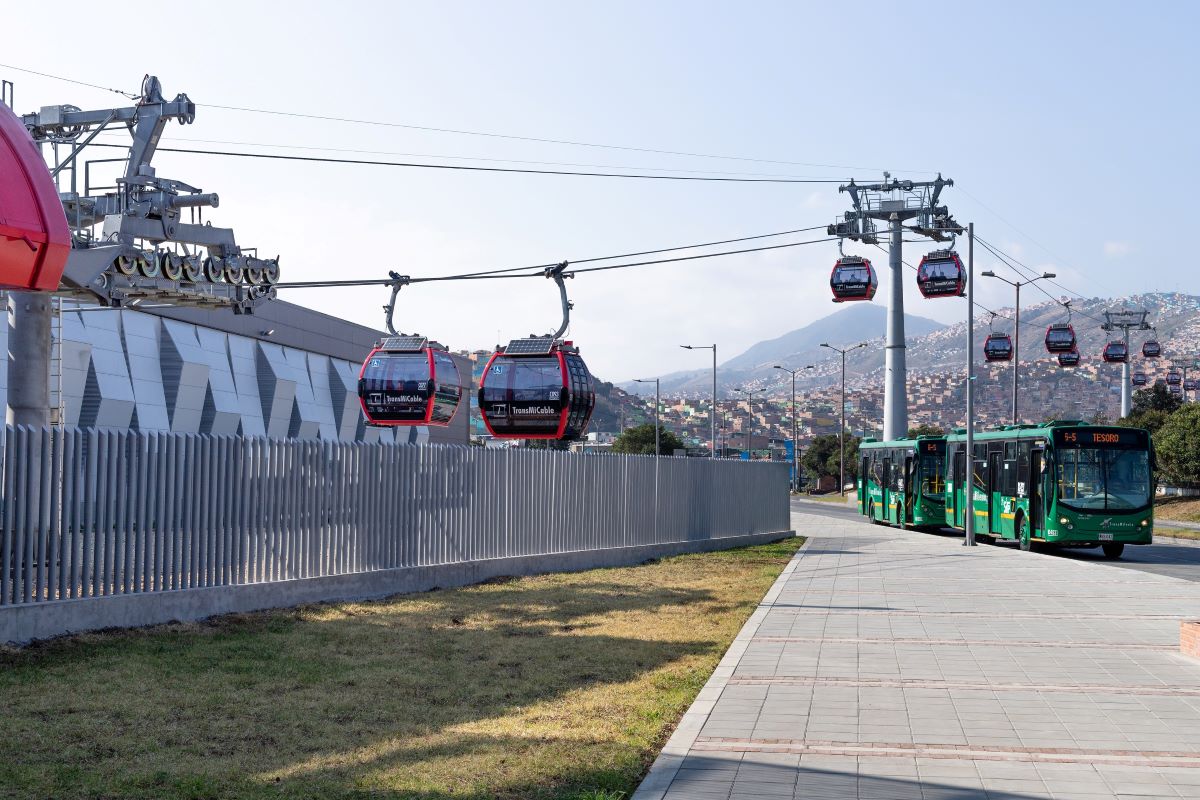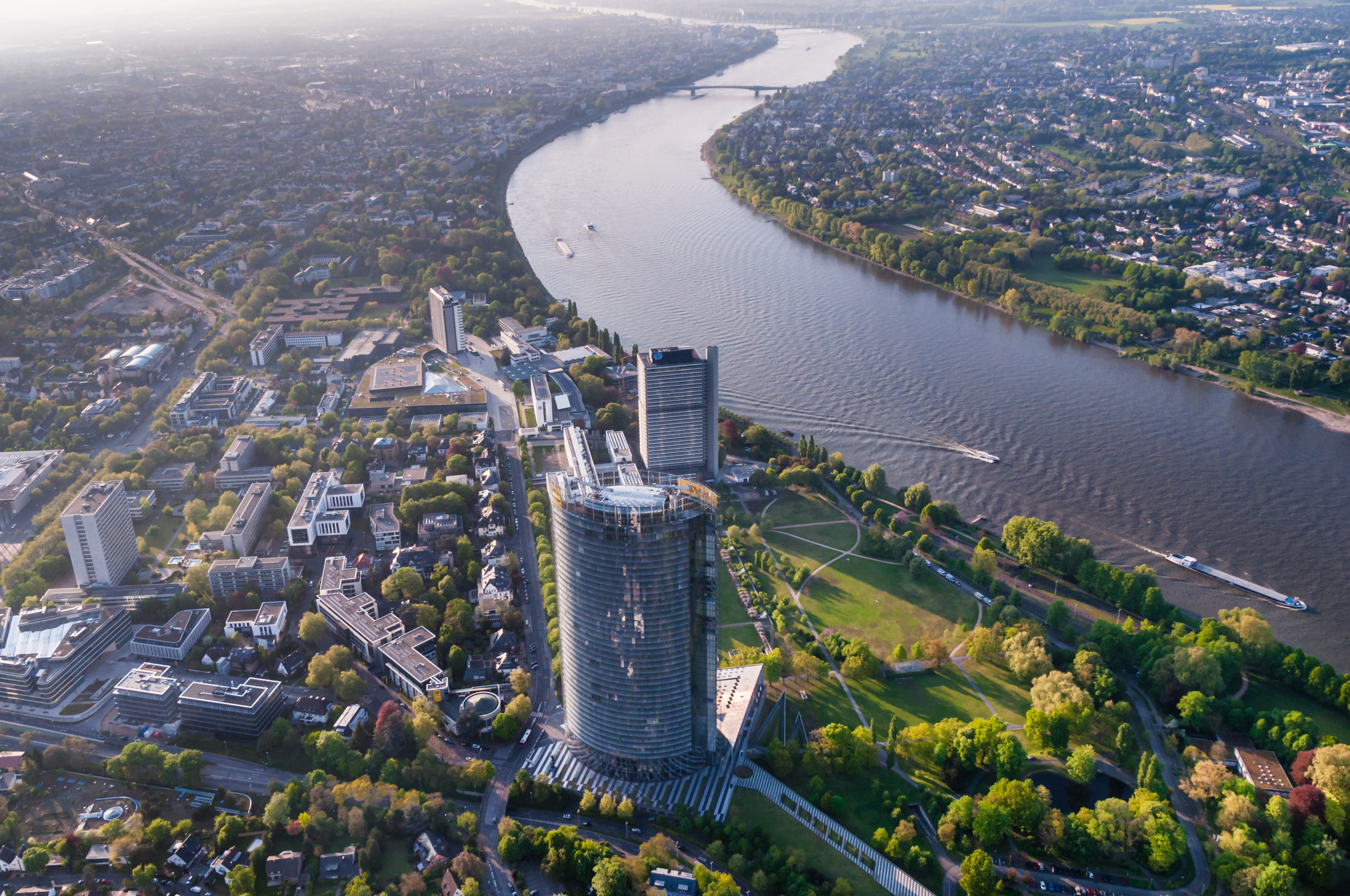
Cities, SI Urban 1/2024
Cash flow: Costs and benefits of urban cable cars
Benefits of the cable car
Spiekermann‘s calculation begins with the benefits of the cable car (see infobox). Thanks to the cable car, travelers save 287,000 hours of travel time per year. The standardized valuation estimates each hour of travel time at €7.10, resulting in a monetary valuation of €2.04 million.
Additionally, the cable car avoids many car trips – approximately 12.4 million kilometers per year. This saves many people fuel and maintenance
costs, among others. The standardized valuation estimates 22 cents per car kilometer.
Spiekermann thus calculates a financial benefit of €2.7 million. Spiekermann evaluates the additional mobility options provided by the cable car at €1.2 million, of which €860,000 is attributed to everyday traffic and €370,000 to the cable car effect.
This effect states that the cable car also attracts tourists and excursionists, resulting in additional (‘induced’) traffic and ticket revenues. These revenues can be reinvested in public transportation. According to the valuation rules, half of the travel time gains from induced everyday traffic are also included here.
Cost-benefit analysis cable car Bonn
Indicators T€/year
| Benefits | |
| Differences in travel time in PT | 2,040 |
| Balance of car operating costs | 2,720 |
| New mobility options | 1,230 |
| Reduction accident follow-up costs | 950 |
| Emission costs | -30 |
| Total benefit effects | 6,910 |
| Balance of PT operating costs | -2,900 |
| Infrastructure maintenance costs | -470 |
| Total individual benefits | 3,540 |
| Costs | |
| Infrastructure capital service | 2,250 |
| Cost-benefit difference | 1,290 |
| Cost-benefit ratio | 1,6 |
Fewer Accidents
Fewer car and bus trips also lead to fewer accidents with these modes of transport. In contrast, the risks of accidents with the cable car are minimal – as a result, accident follow-up costs decrease significantly by €950,000 per year. Spiekermann assesses the emission costs at minus €30,000. Although approximately 12.4 million car kilometers are avoided per year thanks to the cable car, there is thus a negative benefit here.
This is due to the high proportion of fossil fuels in the electricity mix, which must be taken into account according to the valuation rules from 2016, even
if the share of renewable energies is increasing and a conservative approach has been chosen here.
Operating and its costs
Operating the cable car incurs costs for electricity, personnel, etc. The costs for purchasing the cabins are also taken into account here. On the other hand, there are slight savings in bus operations. This results in public transportation operating costs of €2.9 million.
The maintenance costs of the cable car are determined proportionally based on the investments, including a cost buffer of 30 percent. Spiekermann estimates an expense of €470,000 per year here.
Important:
The cost-benefit comparison of bus versus cable car must always be done individually. © DOPPELMAYR

Investment costs
In the feasibility study of 2015, the investment costs for a cable car from Ramersdorf to Venusberg were previously estimated at €41.7 million. Spiekermann‘s cost-benefit analysis now amounts to approximately €66 million (net, including planning costs, as of 2019).
Additionally, a buffer for a cost increase of 30 percent has already been included. The investments in infrastructure are converted into annual costs for depreciation and interest, depending on the useful life of the individual components – the capital service.
Generally, the costs of an urban cable car depend on the system size (1-rope or 3-rope circulating cable car), the number of intermediate stations, and the supports.
Operating costs
Operating costs consist of maintenance, personnel, and energy costs. The electricity consumption of a cable car (kilowatt-hour per 100 passenger kilometers) is half that of a tram, according to the Fraunhofer Institute for Systems and Innovation Research. Depending on how many people use the cable car, there is an annual operating deficit.
However, this also applies to all other types of public transportation such as trams or buses. To transport the same number of people, for example, from Ramersdorf to Venusberg, many buses and just as many bus drivers would be needed instead of a cable car.
However, finding sufficient driving personnel for buses and trains is currently very problematic, and the salary factor is steadily increasing. The acquisition
of a “diesel bus“ costs between €210,000 and €240,000 depending on the equipment (articulated buses €300,000 to €330,000), while electric buses cost 2 to 2.5 times as much, according to the statement of the Bonn municipal utilities.
A cable car to Venusberg in Bonn?
Economically a good idea. © Adobe Stock

Conclusion
Spiekermann states a cost-benefit difference of €1.29 million per year. The standardized evaluation confirms a very good cost-benefit ratio of 1.6. A project is considered viable from 1.0 onwards. Thus, the cable car project is economically profitable and deserving of support.
The calculated surplus benefit amounts to €1.29 million per year – conservatively calculated, including a 30 percent risk premium. Additionally, the cable car can be supported by the federal government and the state of North Rhine-Westphalia.
Of the approximately €66 million in construction costs, around eleven million euros would then have to be borne by the city of Bonn.







